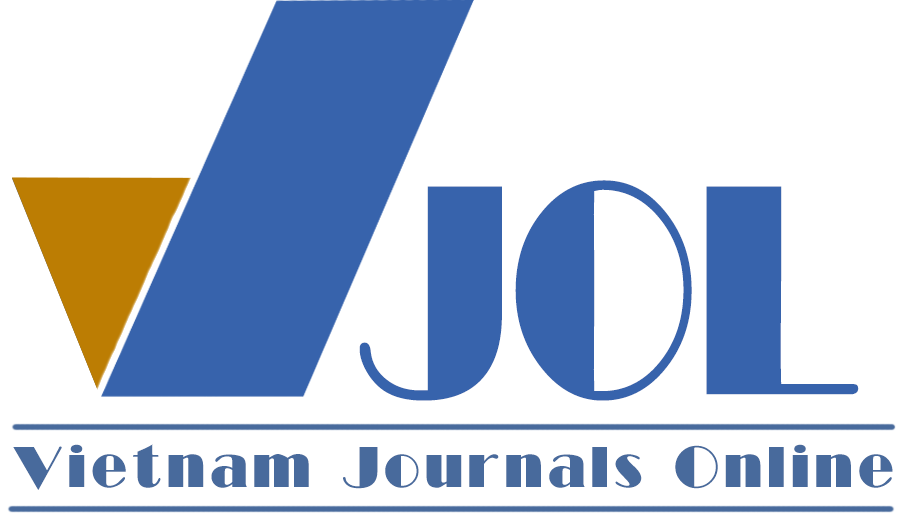The dissemination of non-tariff measures in ASEAN and some implications
Authors
DOI: https://doi.org/10.57110/vnujeb.v3i4.213Keywords:
Non-tariff measures, ASEAN, ASEAN member statesReferences
ASEAN Secretariat. (2021). Non-Tariff Measures Cost-Effective Toolkit, Handbook for ASEAN (adapted from UNCTAD's Non-Tariff Measures Cost-Effective Toolkit). Jakarta. https://asean.org/wp-content/uploads/2021/09/Non-Tariff-Measures-Cost-Effectiveness-Toolkit-NTM-Toolkit.pdf
Asian Trade Centre. (2019). Non-tariff barriers (NTBs) in ASEAN and the removal of non-tariff measures from a business perspective. https://www.eabc-thailand.org/wp-content/uploads/2019/06/NTB_Study_Report_FINAL.pdf
Aldaba, M. (2013). Non-tariff barriers: A challenge to achieving the ASEAN economic community. In S. F. Tang & M. E. Wong (Eds.), The ASEAN Economic Community: A Work in Progress (pp. 125-140). Cambridge University Press.
Baldwin, R. E. (1970). Nontariff Distortions of International Trade. Brookings Institution Press.
Beghin, J., Disdier, A. C., Marette, S., & Van Tongeren, F. (2012). Welfare costs and benefits of non-tariff measures in trade: A conceptual framework and application. World Trade Review, 11(3), 356–375. http://doi.org/10.1017/S1474745612000201
Cadot, O., & Gourdon, J. (2015). Non-tariff Measures, Preferential Trade Agreements, and Prices: New Evidence. CEPII Research Center.
Cadot, O., Gourdon, J., & Van Tongeren, F. (2018). Estimating ad valorem equivalents of non-tariff measures: Combining price-based and quantity-based approaches. OECD Trade Policy Papers No. 215.
Deardorff, A. V., & Stern, R. M. (1997). Measurement of non-tariff barriers. OECD Economics Department Working Papers, No. 179. https://doi.org/10.1787/568705648470
Doan, T., & S. Buban, S. (2019). Managing non-tariff measures in ASEAN. In P. Intal & M. Pangestu (Eds.), Integrated and Connected Seamless ASEAN Economic Community (pp. 45-67). ERIA.
Ederington, J., & Ruta, M. (2016). Nontariff measures and the world trading system. Handbook of Commercial Policy, 1(B), 211–277. https://doi.org/10.1016/bs.hescop.2016.04.010
EU-ASEAN Business Council. (2019). Trade facilitation and its role in growing economies and helping SMEs: Whither ASEAN? https://www.eu-asean.eu/wp-content/uploads/2022/02/TRADE-FACILITATION-its-role-in-growing-economies-and-helping-SMEs-Whither-ASEAN-2019.pdf
Gourdon, J. (2014). CEPII NTM-MAP: A tool for assessing the economic impact of non-tariff measures. CEPII Research Center.
Henson, S., & Loader, R. (2001). Barriers to agricultural exports from developing countries: The role of sanitary and phytosanitary requirements. World Development, 29(1), 85-102. https://doi.org/10.1016/S0305-750X(00)00085-1
Ing, L. Y., Cadot, O., Anandhika R., & Urata S. (2016). Non-tariff measures in ASEAN: A simple proposal. FERDI Working Paper Development Policies (183).
Grubler, J., & Reiter, O. (2021). Characterising non-tariff trade policy. Economic Analysis and Policy, 71, 138-163. https://doi.org/10.1016/j.eap.2021.04.007
de Melo, J., & Nicita, A. (2018). Non-tariff measures: Data and quantitative tools of analysis. https://ferdi.fr/dl/df-pwFsQKwSBf2Djde77ELncfwt/ferdi-p218-non-tariff-measures-data-and-quantitative-tools-of-analysis.pdf
OECD. (2018). The intangible impact of non-tariff measures: Insights from the New World Bank Database.
Otsuki T., Wilson J. S., & Sawadeh, M. (2001). Saving two in a billion: Quantifying the trade effect of European food safety standards on African exports. Food Policy, 26(5), 495-514. https://doi.org/10.1016/S0306-9192(01)00018-5
Ramon, L. C., & Patalinghug, E. (2016). Non-tariff measures affecting small and medium enterprises in the Asia-Pacific region. APEC project: SME 03 2014.
UNCTAD. (2019). International Classification of Non-Tariff Measures 2019. https://doi.org/10.18356/33bf0bc6-en
UNCTAD. (2021). COVID-19 non-tariff measures: The good and the bad, through a sustainable development lens. UNCTAD Research Paper No. 60.
UNCTAD. (2022). Non-tariff measures from A to Z.
Vietnam Chamber of Commerce and Industry (VCCI). (2021). Why ASEAN needs to cut non-tariff measures on imported food agricultural products. https://aecvcci.vn/tin-tuc-n8138/why-asean-needs-to-reduce-its-nontariff-measures-on-agrifood-imports.htm
Downloads
Downloads
Published
Abstract View
PDF Downloaded
How to Cite
Issue
Section
License
Copyright (c) 2023 Mai Thi Thanh Mai

This work is licensed under a Creative Commons Attribution-NonCommercial 4.0 International License.
by VNU Journal of Economics and Business






